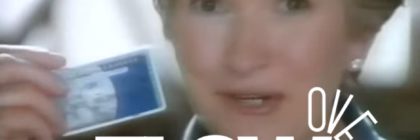
This AI is brought to you by…
Matthew Crain / Miami University
Perplexity, an AI search engine, is introducing advertising to generate revenue, driven by the demands of venture capital investors. The author questions the impact of this shift, highlighting concerns about privacy, the dominance of ad-based business models, and the future of AI-powered technologies.
Read moreK-pop Fandom is Fast Becoming an Empowering Space for LGBTQ+ Youth Around the World
Thomas Baudinette / Macquarie University
K-pop fandom is emerging as a global safe space for LGBTQ+ youth, offering community and resources for identity exploration. This trend creates a paradox, as the fandom’s empowering effects contrast with South Korea’s largely homophobic societal norms.
Read moreDigital Transmissions: Thinking Historically About Broadcasting and Electronic Sell-Through in the Digital Era
Eleanor Patterson / Auburn University
Eleanor Patterson challenges the idea that the post-network era is defined by a break from prior distribution models, highlighting a long history of offering broadcast programming as singular, “on-demand” commodities.
Read moreParallel Hierarchies: Navigating Assistantship in Hollywood’s Above and Below the Line Divide
Kiah Bennett / Muhlenberg College
Bennett examines the unique position of Hollywood assistants as “across-the-line” workers and reveals critical insights into the industry’s hierarchical structures and gatekeeping mechanisms, particularly regarding race, gender, and class dynamics.
Read moreOutside YouTube, Inside Netflix: Bo Burnham and Contemporary Production Culture
Ben Rogerson / Texas Tech University
Through a combination of musical performances, formal reflexivity and cringe confession, Bo Burnham’s 2021 Netflix comedy special Inside theorizes on the self-management and exploitation of creative labor in the contemporary media industries.
Read moreWho Severed the Tiger’s Spine?: Traumas of Occupation and Partition in Exhuma
Soohee Kang / University of Texas at Austin
Soohee Kang explores how Exhuma (2024) works through legacies of colonial occupation and subtly hints at the trauma of Korean partition.
Read more“Scan to Join!”: Selfie Fan Cams and the Sporting Event
Laurel P. Rogers / University of Texas at Austin
Laurel P. Rogers reflects on the “selfie fan cam” at sporting events.
Read moreAmazon MGM Studios not playing by its book in India
Mansa Narain / University of Texas at Austin
Mansa Narain discusses how Amazon commodifies DEI initiatives in India, prioritising profit over genuine inclusion.
Read moreTexas in Close-Up: Exploring the Lone Star State’s Media Ecosystem
Alisa Perren / University of Texas at Austin
Alisa Perren welcomes readers to Flow’s Special Issue on the Texas media industries by describing the complexities of defining and building a media industry at the state and local level.
Read moreBuilding the Television Network: AT&T’s Southwest Extension and the Fort Worth Rodeo
Selena Dickey / Furman University
Selena Dickey argues that the growth of nationwide, synchronous television service was a much more contingent, incremental, and local process than most media historians have previously acknowledged.
Read moreThe Vanishing of Public Media
Deborah L. Jaramillo / Boston University
Deborah L. Jaramillo documents the trials and tribulations of KMBH, the only (and now defunct) public broadcaster in the Rio Grande Valley.
Read moreThrive and Elevate: Austin’s DEI Arts Funding and the Film Festivals it Supports
Hannah Wold / University of Texas at Austin
Hannah Wold investigates the results of the City of Austin’s new DEI-aligned arts grant system on Austin’s film nonprofits.
Read more




















